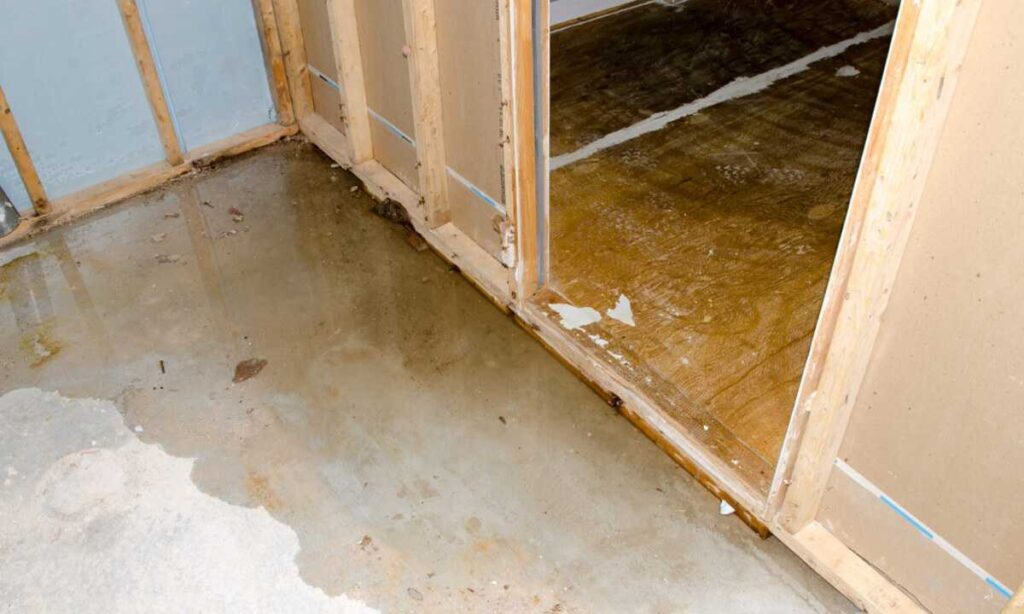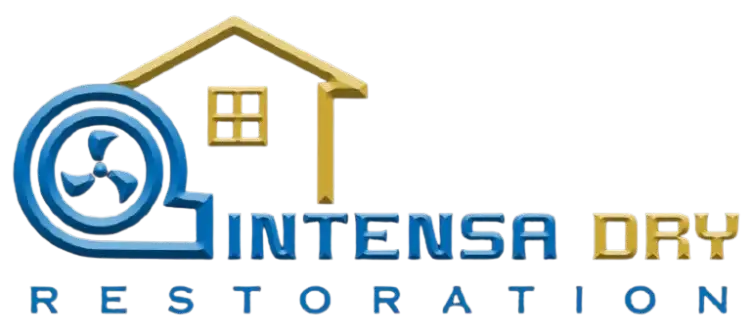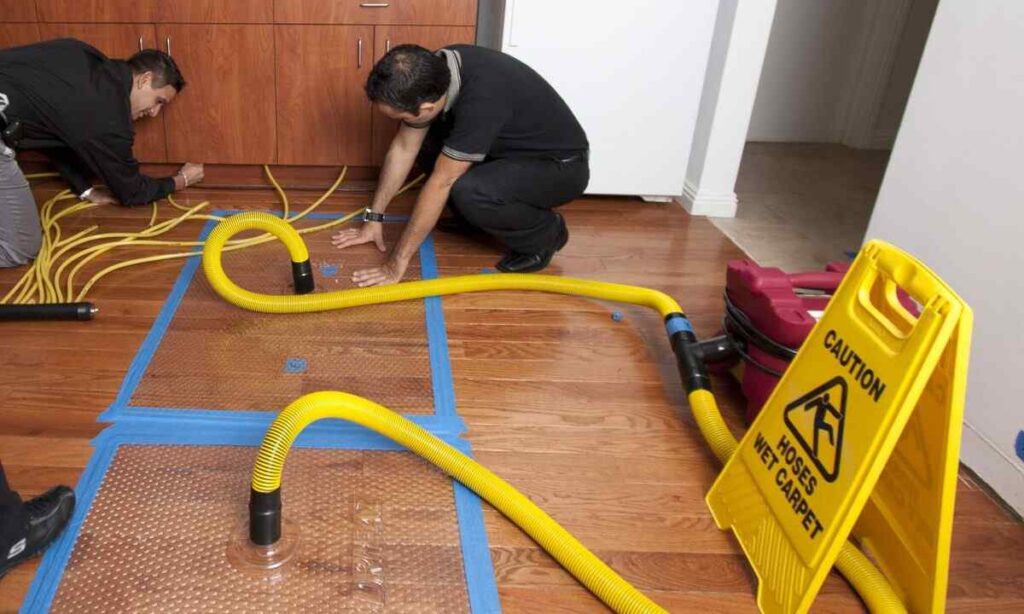Water damage is a persistent threat to property owners, especially in regions like Plano, Texas, where weather conditions can vary from scorching heat to occasional heavy rainfall. Recognizing the signs of water damage early is crucial for minimizing the impact on your Plano property. Whether it’s a leaky roof, burst pipes, or hidden plumbing issues, understanding the causes and taking preventive measures can save you from costly repairs. In this in-depth guide, Intensa Dry will help you explore the various sources of water damage, delve into the early signs, discuss preventive measures, and emphasize the importance of swift action to protect your investment.
Understanding the Causes of Water Damage
Understanding the causes of water damage is paramount for homeowners in Plano, Texas, where the climatic conditions can range from scorching heat to occasional heavy rainfall. Water damage poses a significant threat to property, and being aware of its various sources empowers homeowners to proactively safeguard their investments. Plano’s diverse weather patterns, coupled with the potential vulnerabilities in plumbing and structural components, make it imperative to delve into the root causes of water damage. From weather-related issues like flash floods and storms to plumbing failures, appliance malfunctions, and roof leaks, a comprehensive understanding of these factors is the first line of defense against potential property damage.
Weather-related Issues:
In Plano, Texas, where the climate can oscillate between extreme heat and sudden, heavy rainfall, weather-related issues pose a substantial risk to properties. Flash floods and storms, common occurrences, have the potential to lead to water intrusion, particularly in homes with vulnerabilities like damaged roofs or inadequately sealed windows. Recognizing the implications of these weather patterns is paramount for homeowners, as it enables them to take proactive measures, such as reinforcing roofing structures and improving seals, to mitigate the risk of water damage.
Plumbing Failures:
Leaky pipes, burst hoses, and malfunctioning plumbing fixtures are pervasive causes of water damage in homes. Aging infrastructure and inadequate maintenance can amplify these risks, necessitating a keen understanding of potential vulnerabilities in plumbing systems. Homeowners can safeguard their properties by regularly inspecting and maintaining plumbing components, promptly addressing leaks, and considering upgrades to mitigate the risk of water damage from plumbing failures.

Appliance Malfunctions:
Household appliances, including water heaters, washing machines, and dishwashers, are susceptible to malfunctions that can result in water leaks. Regular checks for signs of wear and tear, along with timely replacements and upgrades, are essential preventative measures. Homeowners should be proactive in maintaining these appliances, as doing so not only prevents potential water damage but also ensures the longevity and efficiency of essential household equipment.
Roof Leaks:
A damaged or poorly maintained roof can be a gateway for water to infiltrate a property. Routine roof inspections are critical for identifying missing shingles, cracks, or signs of deterioration. Addressing these issues promptly is a foundational step in preventing water damage. By investing in regular roof maintenance and addressing any structural concerns immediately, homeowners in Plano can fortify their homes against the risk of water damage originating from roof leaks.
Early Signs of Water Damage
Recognizing the early signs of water damage is a fundamental aspect of responsible homeownership, particularly in regions like Plano, Texas, where weather fluctuations and potential vulnerabilities in property infrastructure create an environment conducive to water-related issues. These early indicators serve as silent warnings, offering glimpses into potential problems that, if left unaddressed, can lead to significant damage and financial strain. From subtle discolorations on ceilings and walls to the musty odors that signal mold growth, understanding these initial cues empowers homeowners to take proactive measures. In this section, we will explore the early signs of water damage in detail, providing homeowners in Plano with the knowledge needed to detect issues early, intervene promptly, and safeguard their properties against the potentially devastating effects of water damage.
Discoloration or Stains:
One of the earliest indicators of water damage is the appearance of discoloration or stains on ceilings and walls. These unsightly marks, often taking on a brown or yellowish hue, signal potential leaks in the roof or plumbing. Identifying and addressing these stains promptly is crucial as they not only compromise the aesthetics of your home but also serve as visible markers of underlying issues. Early intervention can prevent further structural damage and the development of mold, preserving both the visual appeal and structural integrity of your property.
Musty Odors:
The emergence of a persistent musty odor is a clear indication of mold growth resulting from water damage. Mold thrives in damp and hidden environments, and the presence of a musty smell suggests hidden moisture issues within the structure. Addressing the source of this unpleasant odor early on is crucial to prevent the proliferation of mold, ensuring not only the olfactory comfort of your home but also maintaining a healthy indoor environment for you and your family.
Peeling or Bubbling Paint:
Moisture seeping behind walls can lead to the peeling or bubbling of paint, creating visible imperfections. This manifestation not only detracts from the visual appeal of your interior but also serves as a tangible sign of water damage. Investigating the root cause, whether it be a leak or inadequate ventilation, is essential for preventing further degradation. Early intervention preserves the structural integrity of your walls and ensures that your home remains an aesthetically pleasing and comfortable space.
Warped or Buckling Floors:
Water damage can manifest in the warping or buckling of floors, particularly in wooden or laminate surfaces. These alterations in the flooring’s appearance are indicative of moisture-related issues that, if left unattended, can lead to more significant problems. Timely identification and intervention are necessary not only to prevent further damage but also to maintain a safe living environment. Addressing warped or buckling floors early on not only ensures the longevity of your flooring but also mitigates potential safety hazards, such as tripping or falling.
Mold Growth:
Visible mold growth is a significant sign of water damage, and its presence can have far-reaching consequences. Mold thrives in damp, dark environments, and its appearance is a clear indication of excessive moisture within your property. Promptly addressing the source of this moisture is critical to prevent mold from spreading and posing health risks to the occupants. Early intervention not only preserves the structural integrity of your home but also ensures a healthy and comfortable living space for you and your family.
Unexplained Increase in Water Bills:
A sudden and unexplained spike in water bills, without a corresponding increase in usage, could be indicative of a hidden water leak. Diligently monitoring water bills and investigating any abrupt changes allows homeowners to identify and rectify potential plumbing issues promptly. Early intervention not only prevents water damage but also alleviates the financial burden associated with undetected leaks, ensuring the sustainability and cost-effectiveness of your property.
Preventive Measures for Water Damage
Implementing preventive measures for water damage is the cornerstone of responsible homeownership, particularly in regions like Plano, Texas, where the climate can pose varying challenges. The potential sources of water damage are diverse, ranging from weather-related issues to plumbing failures and appliance malfunctions. Understanding the need for proactive measures is vital in safeguarding the structural integrity of a property and preventing potential health hazards. In this section, we will explore comprehensive strategies and practical tips that homeowners in Plano and similar climates can employ to mitigate the risks of water damage. From regular property inspections to maintenance of plumbing and appliances, these measures are not only preventive but also contribute to the overall longevity and resilience of a home in the face of changing environmental conditions.
Regular Property Inspections:
Regular property inspections serve as the cornerstone of water damage prevention. Schedule comprehensive evaluations, paying meticulous attention to vulnerable areas such as the roof, windows, and foundation. Look for signs of wear, leaks, or damage, and address them promptly to prevent water infiltration. Early detection through thorough inspections can save your home from severe structural issues and the financial burdens associated with extensive repairs.
Proactive Plumbing Maintenance:
Maintaining a robust plumbing system is paramount for averting water damage. Conduct regular inspections of pipes, checking for leaks, corrosion, or any signs of deterioration. Ensure secure connections and promptly address any issues identified during inspections. Insulating pipes, especially during colder seasons, mitigates the risk of burst pipes, offering a proactive defense against potential water damage and the associated headaches.
Roof Maintenance:
The roof plays a pivotal role in shielding your home from water damage. Conduct routine inspections for missing or damaged shingles, cracks, or any signs of wear. Swiftly repair any identified issues to prevent water from seeping into the structure, safeguarding your home against the potential for extensive and costly damage. Regular roof maintenance not only protects your property but also extends the lifespan of this critical component.
Appliance Maintenance:
Household appliances can turn into sources of water damage if not properly maintained. Regularly inspect appliances such as water heaters, washing machines, and dishwashers for leaks and ensure all connections are secure. Adhere to manufacturers’ maintenance guidelines, replacing aging appliances before they become liabilities. Proactive appliance maintenance not only prevents potential water damage but also ensures the smooth functioning of these essential household devices.
Proper Ventilation:
Effective ventilation is instrumental in preventing moisture-related issues. Install and utilize exhaust fans in moisture-prone areas like bathrooms, kitchens, and basements to reduce humidity levels. By preventing the accumulation of moisture, proper ventilation mitigates the risk of mold and mildew growth, contributing to a healthier indoor environment. Consider incorporating dehumidifiers in areas where moisture tends to concentrate for an added layer of protection against water damage.
Landscaping:
Strategic landscaping can be a proactive measure in preventing water damage. Ensure that the ground around your home slopes away from the foundation, facilitating proper water drainage. Regularly clear gutters and downspouts of debris to prevent blockages that could impede water flow. Thoughtful landscaping not only protects your property from potential water damage but also enhances its overall resilience against environmental challenges.
What to Do If You Suspect Water Damage
Discovering or suspecting water damage in your home can be a stressful and concerning situation, prompting the need for swift and decisive action. Whether it’s the telltale signs like discoloration on walls, a musty odor, or visible mold growth, understanding what steps to take is essential. In this section, we will outline a comprehensive guide on what to do if you suspect water damage in your home. From identifying the source of the issue to documenting the damage and engaging with efficient professionals, this guide aims to empower homeowners to navigate the challenges of water damage with confidence and ensure a prompt and effective response to minimize potential risks and damages.

If you suspect water damage in your home, it’s crucial to take swift and decisive action to mitigate potential issues and prevent further damage. Start by identifying the source of the water damage, inspecting common areas prone to leaks such as roofs, plumbing fixtures, and appliances. If the source is not immediately apparent, consider seeking professional assistance to conduct a thorough assessment. Document the extent of the damage with photographs or videos, as this documentation serves as valuable evidence for insurance claims and helps professionals understand the scope of the issue. For significant water damage, consult with water damage restoration professionals who can assess the situation, provide a detailed plan of action, and guide you through the restoration process. Address mold growth promptly if present, as mold can pose serious health risks and compromise indoor air quality. Contact your insurance provider as soon as possible, providing them with documentation and relevant information to initiate the claims process. Begin the cleanup process promptly to prevent further damage and mold growth, removing standing water and thoroughly drying affected areas. Monitor for secondary damage, such as structural issues or electrical problems, and address them promptly to ensure the safety of your home. Finally, take steps to prevent future water damage by implementing preventive measures such as improved drainage, regular maintenance of plumbing and appliances, and ensuring proper ventilation in moisture-prone areas. Acting swiftly and enlisting professional assistance when needed is essential in mitigating water damage and preserving the integrity of your home.
Conclusion
In conclusion, early detection of water damage in your Plano property is essential for preventing costly repairs and safeguarding the well-being of your home and its occupants. Regular maintenance, proactive inspections, and swift action in response to early warning signs are key to mitigating the impact of water damage. There are various water damage service providers in Texas. By incorporating these practices into your property management routine, you can ensure a dry, secure, and comfortable living environment for years to come. Water damage may be a persistent threat, but with knowledge and preventive measures, you can fortify your property against its potential consequences.
FAQ’s
How do I know if my ceiling has water damage?
Look for water stains or discoloration on the ceiling, which may indicate water damage. Sagging or bubbling areas, as well as peeling paint, are additional signs of potential ceiling water damage.
How do you test for water damage to walls?
Press and inspect the walls for soft spots, bulging, or paint discoloration, as these can indicate water damage. Use a moisture meter to detect hidden moisture within the walls, highlighting potential issues that may not be visible.
How can I detect water damage?
Look for signs like water stains, musty odors, and peeling paint, which indicate water damage. Conduct regular inspections for warped floors, mold growth, and unexplained increases in water bills. Utilize a moisture meter for hidden issues and promptly address any identified concerns to prevent further damage.
What does early water damage look like?
Early water damage may manifest as discolored or stained walls, ceilings, or floors. Musty odors and peeling paint can also indicate moisture issues. Identifying and addressing these signs promptly is crucial to prevent more extensive damage.
Does water damage smell?
Yes, water damage can produce a musty or earthy odor, especially when mold is present. This smell is often indicative of hidden moisture issues within walls or other structural elements. Identifying and addressing the source promptly is essential to prevent further damage and potential health issues.


